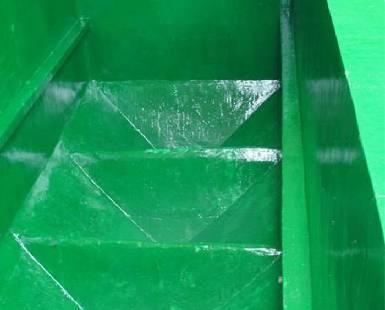News
Corrosion Resistant FRP are unique composite materials in many respects. For starters, they can be formulated to be corrosion, abrasion, and UV resistant, as well as, smoke and fire retardant. FRP are often a cost-effective choice in many industrial applications; they have long life cycles and have demonstrated durability in stringent environments with reduced maintenance costs. Here are five reasons FRP stand out when compared to metals and metal alloys:
High Strength-to-Weight Ratio:FRP are lightweight and strong; they posses a vast range of mechanical properties, including tensile, flexural, impact and compressive strengths. When compared to most other metals they can deliver more strength per unit of weight then most metals. Their light weight also lends itself well to logistics—it’s easier to ship and install.
Customizable:Every industry has unique problems to solve. With FRP engineers have the ability to tailor or modify the design of their FRP to meet their specific requirements. For example, consider the benefits of altering resin, glass content to optimize your corrosion and or abrasion resistance—you can’t do this with metal.

Corrosion Resistant FRP
Anisotropic:Engineers can maximize the performance and efficiency of the structure when they take advantage of the inherent anisotropic properties of FRP. Because the maximum strength is in the direction of the fiber reinforcements engineers can optimize the design to optimize the materials and the overall performance of the structure.
High Tensile Strength with Low Modulus of Elasticity:FRP have high tensile strength due to its composite properties. Engineers can specify unique resin, fiber-reinforcement compositions when working with FRP manufactures. The design control inherent to FRP will enhance performance and can only be realized when working with composites, not metals.
Ability to Form Complex Shapes:Engineers can harness ultimate design flexibility when using FRP—an advantage over traditional materials such as metal, concrete, and wood. When you integrate FRP design into your project into your project also consider the added benefits of part consolidation, noise reduction and streamlined design.
There are many other reasons one should consider using FRP. For example, they offer high dialectical strength, thermal cycling, dimensional stability, impact resistance, low coefficient of friction, and do not require cathodic protection—just to name a few.
The High Quality FRP is that they are customizable and can be designed and modified to meet almost any chemical/physical requirement. This is primarily why FRP have been chosen by so many industries as the material for corrosion resistance applications—where other materials fail, FRP thrives. With so many benefits, it’s no wonder that FRP are viewed by so many as a cost-effective alternative to conventional materials.